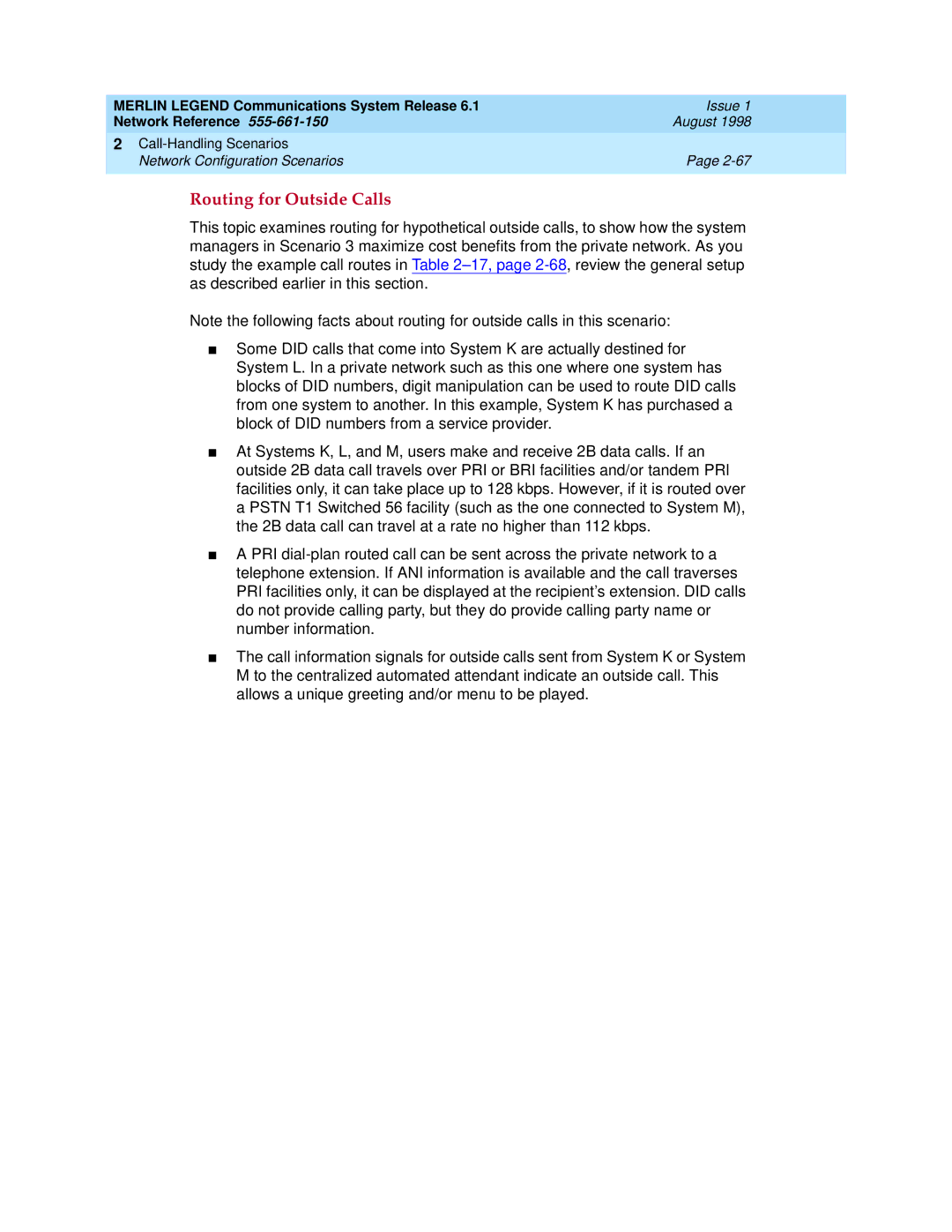MERLIN LEGEND Communications System Release 6.1 | Issue 1 |
Network Reference | August 1998 |
2 |
|
Network Configuration Scenarios | Page |
|
|
Routing for Outside Calls
This topic examines routing for hypothetical outside calls, to show how the system managers in Scenario 3 maximize cost benefits from the private network. As you study the example call routes in Table
Note the following facts about routing for outside calls in this scenario:
■Some DID calls that come into System K are actually destined for System L. In a private network such as this one where one system has blocks of DID numbers, digit manipulation can be used to route DID calls from one system to another. In this example, System K has purchased a block of DID numbers from a service provider.
■At Systems K, L, and M, users make and receive 2B data calls. If an outside 2B data call travels over PRI or BRI facilities and/or tandem PRI facilities only, it can take place up to 128 kbps. However, if it is routed over a PSTN T1 Switched 56 facility (such as the one connected to System M), the 2B data call can travel at a rate no higher than 112 kbps.
■A PRI
■The call information signals for outside calls sent from System K or System M to the centralized automated attendant indicate an outside call. This allows a unique greeting and/or menu to be played.
